I was lucky enough to have inherited my dad’s version of this marvelous treasure of a book, Don Quixote by Miguel de Cervantes Saavedra, and which has notes in his handwriting, making it even more precious. My undergraduate degree was in Spanish, and as part of my graduation requirements, I had to read Part II in its original language, not an easy task, I can tell you. But it gave me such an appreciation for the sly humor and satire that characterizes this book.
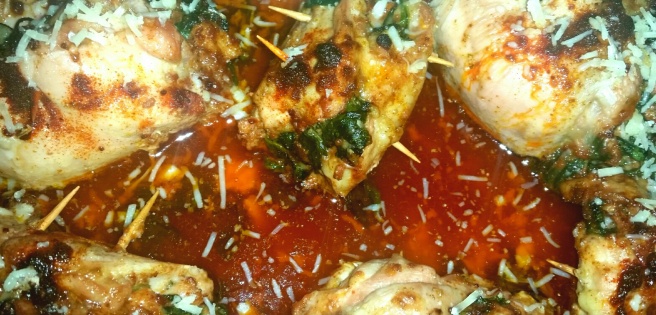
I’m sure everyone knows the classic story of The Man of La Mancha, the wanna-be knight who has rotted his brain by reading too many books on medieval romance, and one day decides to go out into the world as a Knight, righting wrongs, serving justice where needed, and of course, acting as a courtly gentleman toward all ladies. He knights himself with an old armored helmet and an elderly horse named Roxinante, finds a servant in his neighbor Sancho Panza, and off into the world they go to have adventures both touching, sad, and hilarious.
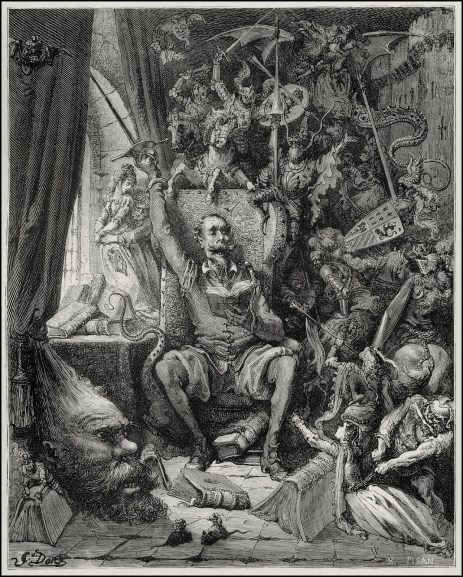
The book is divided into two sections, the first part being the tale of adventures Don Quixote has, including the iconic scene where he fights the windmills, is knighted at the inn, and constantly defends his lady Dulcinea del Toboso, who is, in reality, a slatternly servant. (That’s a great word, slatternly, isn’t it?)
In Part II, Cervantes uses the literary device known as meta-fiction, meaning the characters are self-aware and realize they are literary creations. It’s a fun thing to read, and fascinating on many levels, the idea of literary characters who know they are book characters.
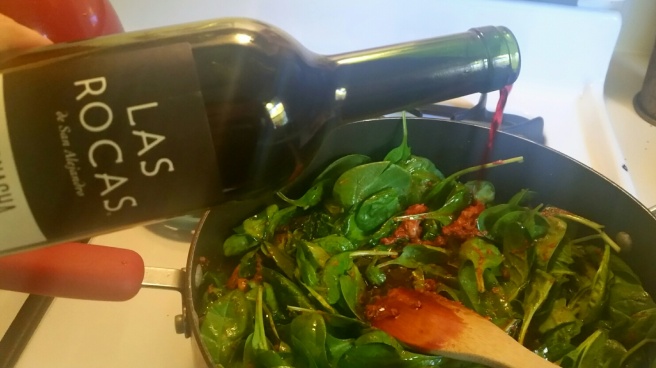
In Chapter XX of the the second part of the book, we find them attending the wedding of Camacho The Rich, who is marrying Quiteria The Fair. Quiteria has renounced Basilio The Poor to marry the wealthy Camacho, and Basilio is heart-broken. Sancho and Quixote argue the virtues of marrying for love vs. marrying for money, with Sancho feeling Basilio has no right to marry anyone if he has no money. Quixote, being the romantic that he is, is irritated at Sancho’s argument and hushes him rudely before they actually arrive at the sumptuous wedding feast, which is true medieval excess in every way. There are cheeses galore, gallons of wine, pigs waiting to be roasted, bread and stews, plucked chickens waiting to be cooked, and a myriad of other foods, which symbolize Camacho’s wealth and the ostentation of the wealthy class.
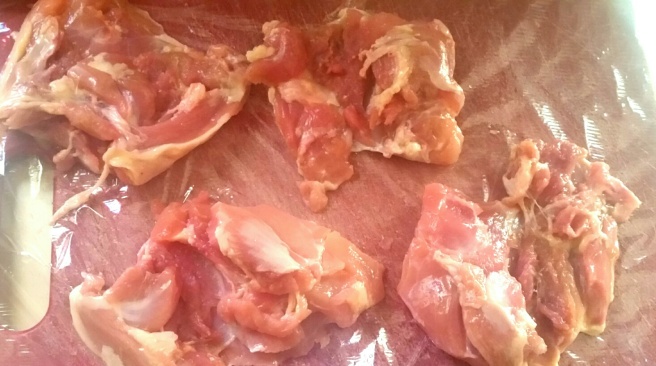
Sancho did as his master bade him, and putting the saddle on Roxinante and the pack-saddle on Dapple, they both mounted and at a leisurely pace entered the arcade. The first thing that presented itself to Sancho’s eyes was a whole ox spitted on a whole elm tree…….six stewpots that stood round the blaze had not been made in the ordinary mould of common pots, for they were six half wine-jars………….Countless were the hares ready skinned and the plucked fowls that hung on the trees for burial in the pots, numberless the wildfowl and game of various sorts suspended from the branches that the air might keep them cool. Sancho counted more than sixty wine skins of over six gallons each, and all filled, as it proved afterwards, with generous wines.
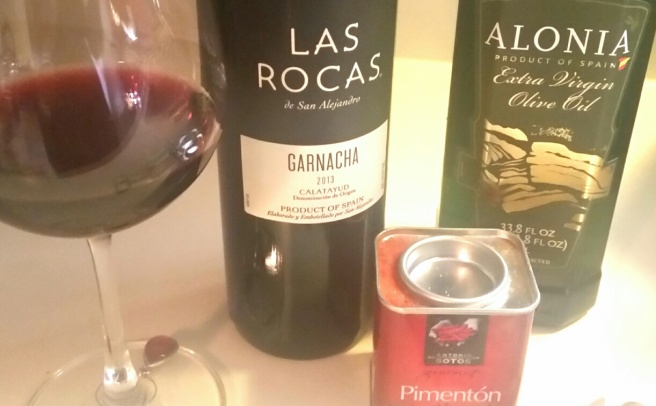
As much as I would love to someday be able to recreate an entire medieval feast of this magnitude, today I settled for a riff on the plucked fowls featured as part of Camacho’s wedding feast. Because let’s face it, chicken stuffed with chorizo and Spanish cheese can make everything in the world better!
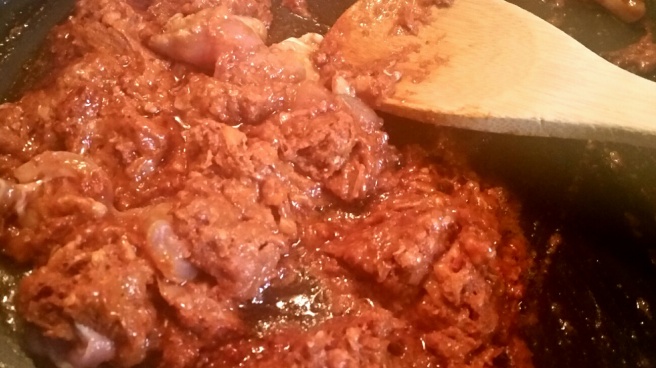
This is the method that worked for me, based on several previous attempts to make stuffed chicken, and also with a nod toward Nigella Lawson’s chicken with chorizo and cannellini beans, a huge favorite of mine.
INGREDIENTS
6 boneless, skinless chicken thighs, pounded somewhat flat
One 1-ounce tube of beef chorizo, preferably cured Spanish but use what you have on hand
1 cup Manchego cheese, grated
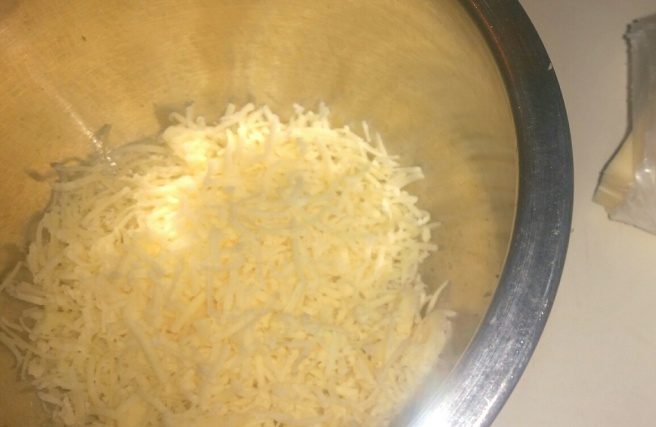
3 cups of spinach
1 tablespoon Spanish smoked paprika
METHOD
Heat the oven to 350F.
Squeeze the chorizo out of its casing into a non-stick pan, and cook over medium heat until the beautiful, terra-cotta colored oils start to ooze out of them. Probably about 10 minutes should do it.
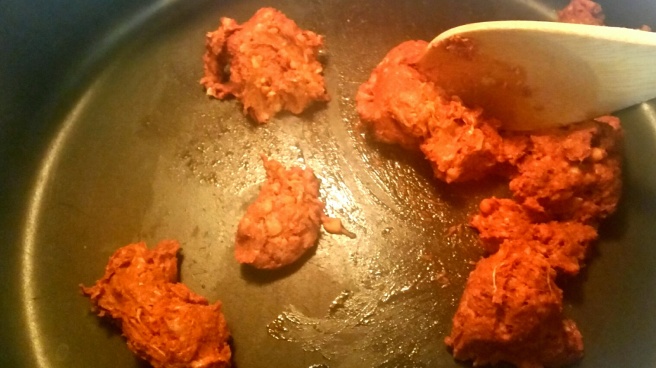
Add the spinach to the chorizo in the pan, add a dash of red wine to give more liquid to the veg, and season with garlic powder. Stir frequently until the spinach wilts, about 10 minutes again. Remove from heat.
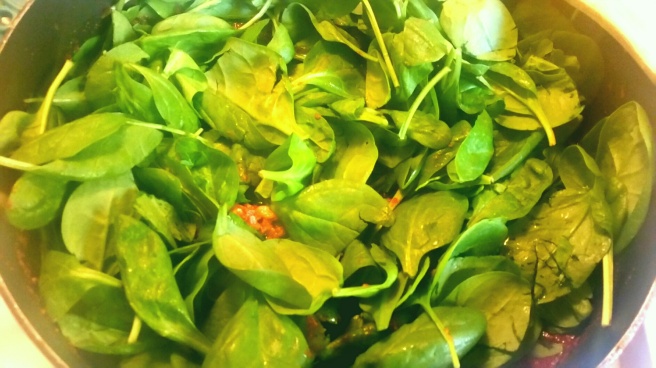
Flatten out your chicken thighs using a rolling pin. Just cover them with plastic wrap and whack the hell out of each thigh for a few seconds. Excellent stress relief, which I think many of us need right now.
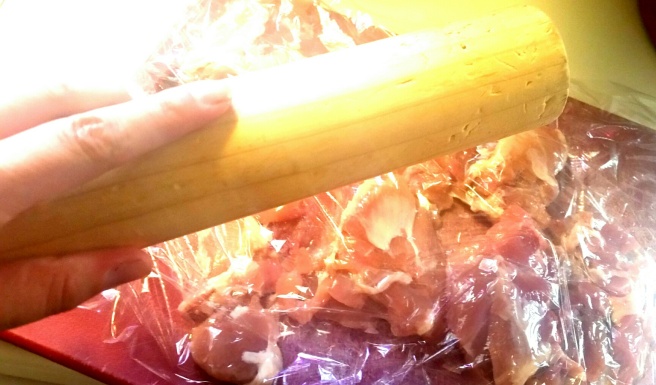
Lay a spoonful of the chorizo mixture in the center of each rolled-out chicken thigh.

Sprinkle over a handful of grated Manchego. Then roll up each thigh and spear with toothpicks to hold the shape.
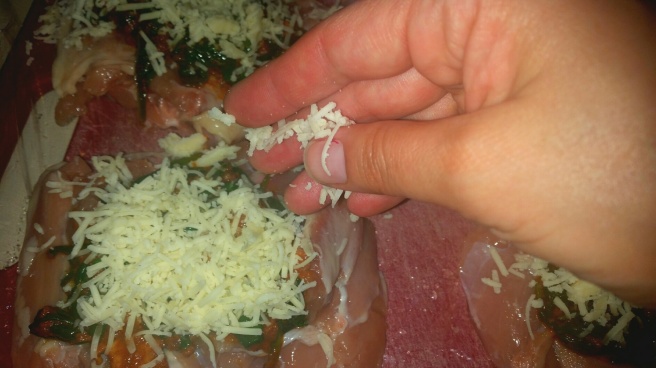
Place in an lightly oiled baking pan. Pour a little bit of chicken broth and a little bit of red wine into the bottom of the pan, to keep the chicken moist and prevent burning and sticking to the pan bottom.
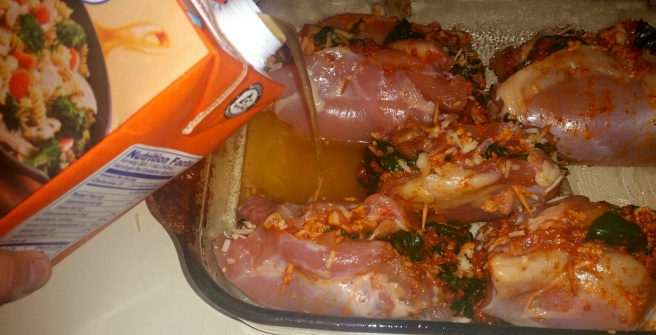
Sprinkle Spanish paprika on top of each chicken roll. Admire the gorgeous, deep red ochre of the spice on the chicken.
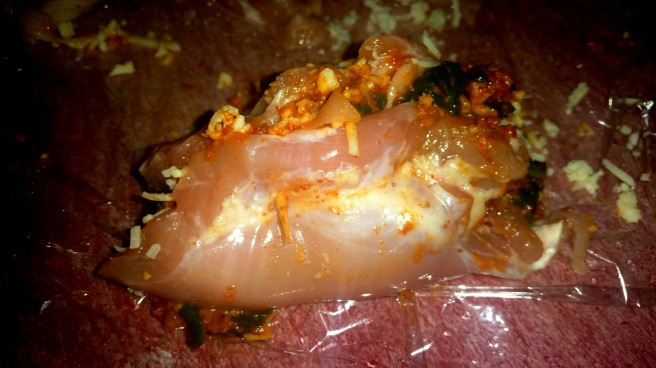
Bake for half an hour. You’ll start seeing the cheese oozing and melting out of the chicken. This is a good thing. Trust me. After 30 minutes, remove from the oven and allow to cool. Sprinkle over a bit of sea salt. Don’t forget to remove the toothpicks from the chicken. Trust me on this.
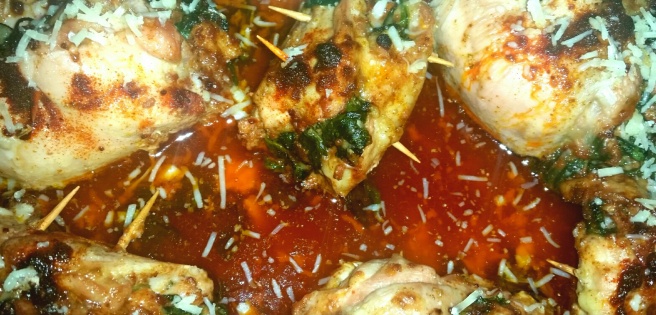
Serve as is, with whatever side or starch you like. I had some leftover tomato basil fettucine and some egg noodles, so I cooked them together, then made a simple lemon-cream sauce for the pasta. Yum!
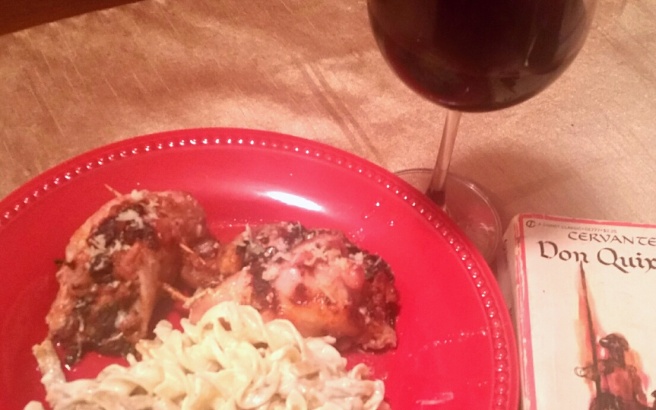
Wash it down with a nice Spanish red. Because it wouldn’t be truly an homage to our favorite knight errant and his sidekick if we didn’t toast them with the wine of Spain.
Si hay este mundo vino, y no bebió vino, a que chingado vino.

Fantastic review and pictures. Getting hungry reading thru it! 🙂 It’s such a cool approach to tell the story with the two parts to the book. I haven’t really seen a good film / tv version of it tho.
LikeLiked by 1 person
Me neither. I think a book of this magnitude might actually require a miniseries. Trying to compress it into it two or three hour film would not do it any kind of justice. Glad you enjoyed my post.
LikeLiked by 1 person
Oh my, this looks and sounds so heavenly. I am such a Chorizo fan, I really really love it. I love what you have done with it here. I had to read Don Quijote in Spanish too, I grew up there and even for the Spaniards it’s a challenge to read, believe me. A great story though.
LikeLiked by 1 person
So glad you like the post! Yes I agree that the book is probably one of the most challenging in any language but even if you can read parts of it, it’s a very entertaining story. Thank you for commenting and have a great week!
LikeLiked by 1 person
Oh, and don’t forget to enter my free book giveaway if you’re interested.
LikeLiked by 1 person
your description of don quixote was really fascinating. it sounds so incredibly modern. and yet it is a window into another time in history. the food of course looks like a worthy feast. beautiful job as always.
LikeLiked by 1 person
Thanks, Rottingkins. I’ve always enjoyed the story of Don Quixote and Sancho Panza, and there’s something to be said for having read it in the original language if possible. Cervantes was quite a jokester in his way and there are so many little subtle mockeries and satire throughout the entire book. Cooking the modern version of the plucked fowl was pretty fun as well. Glad you enjoyed the post and thanks for commenting, as always.
LikeLike